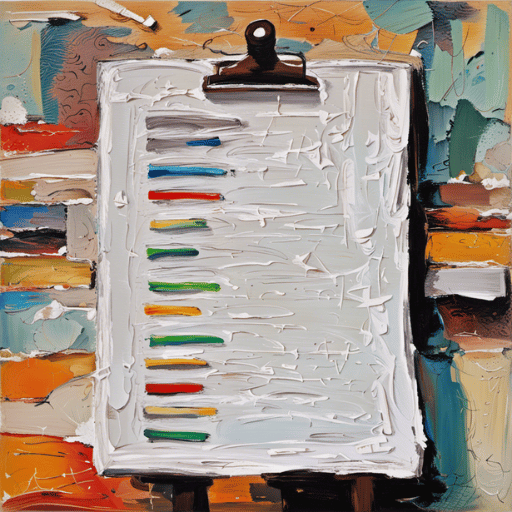3D Animator SOPs
Creating Standard Operating Procedures for your 3D Animator work can be difficult and take time. That’s why we’ve created these example 3D Animator SOPs so you can jumpstart your SOP creation process. We want to help you set up your Design/Animation systems and processes by taking these sample SOPs and building out your own SOPs template library. By having all your Design/Animation procedures in one place, your team will have the information they need at all times. Let’s look at some 3D Animator SOP examples.
3D Animator SOP Examples
1. Animation Pipeline SOP: The purpose of this SOP is to outline the step-by-step process of creating a 3D animation, from concept development to final rendering. It includes tasks such as storyboarding, modeling, rigging, texturing, animation, lighting, and rendering. The scope of this SOP covers the entire animation production process. The 3D Animator is responsible for following this SOP to ensure a smooth workflow and consistent quality. This SOP references other related SOPs such as Storyboarding SOP, Modeling SOP, Rigging SOP, Texturing SOP, Animation SOP, Lighting SOP, and Rendering SOP.
2. Storyboarding SOP: This SOP details the process of creating a storyboard, which serves as a visual blueprint for the animation. It includes guidelines for creating shot compositions, camera angles, and key poses to effectively convey the story. The scope of this SOP covers the initial stages of animation production. The 3D Animator, along with the Director or Art Director, is responsible for following this SOP. This SOP may reference the Concept Development SOP.
3. Modeling SOP: The purpose of this SOP is to provide guidelines for creating 3D models of characters, props, and environments. It includes techniques for efficient polygon modeling, UV mapping, and creating high-quality models. The scope of this SOP covers the modeling phase of animation production. The 3D Animator, along with the Modeling Artist, is responsible for following this SOP. This SOP may reference the Concept Development SOP.
4. Rigging SOP: This SOP outlines the process of rigging 3D models, which involves creating a digital skeleton and controls to enable realistic movement and deformation. It includes guidelines for joint placement, skinning, and setting up control systems. The scope of this SOP covers the rigging phase of animation production. The 3D Animator, along with the Rigging Artist, is responsible for following this SOP. This SOP may reference the Modeling SOP.
5. Texturing SOP: The purpose of this SOP is to provide guidelines for applying textures and materials to 3D models. It includes techniques for UV unwrapping, texture painting, and shader setup. The scope of this SOP covers the texturing phase of animation production. The 3D Animator, along with the Texturing Artist, is responsible for following this SOP. This SOP may reference the Modeling SOP.
6. Animation SOP: This SOP outlines the process of animating 3D models, bringing them to life through movement and performance. It includes guidelines for keyframe animation, motion capture integration, and character acting. The scope of this SOP covers the animation phase of production. The 3D Animator is responsible for following this SOP. This SOP may reference the Storyboarding SOP and Rigging SOP.
7. Lighting SOP: The purpose of this SOP is to provide guidelines for setting up lighting and creating the desired atmosphere in a 3D scene. It includes techniques for light placement, shadow casting, and color grading. The scope of this SOP covers the lighting phase of animation production. The 3D Animator, along with the Lighting Artist, is responsible for following this SOP. This SOP may reference the Modeling SOP.
8. Rendering SOP: This SOP details the process of rendering the final animation frames or sequences. It includes guidelines for setting up render settings, managing render farms, and optimizing render times. The scope of this SOP covers the rendering phase of animation production. The 3D Animator, along with the Rendering Artist or Technical Director, is responsible for following this SOP. This SOP may reference the Lighting SOP.
9. Quality Control SOP: The purpose of this SOP is to ensure the overall quality and consistency of the animation output. It includes guidelines for reviewing and addressing issues related to animation timing, character performance, visual effects, and technical errors. The scope of this SOP covers the entire animation production process. The 3D Animator, along with the Director or Lead Animator, is responsible for following this SOP. This SOP may reference all the above SOPs.
10. File Management SOP: This SOP outlines the procedures for organizing and managing project files, ensuring efficient collaboration and version control. It includes guidelines for file naming conventions, folder structure, and backup protocols. The scope of this SOP covers the entire animation production process. The 3D Animator, along with the Production Coordinator or Project Manager, is responsible for following this SOP. This SOP may reference all the above SOPs
3D Animator SOP Templates
Looking for SOP templates for your 3D Animator work? We’ve got you covered. You can build out your company SOPs using the sample SOP information above (added to our template) or our team can put together a starter SOPs template based on your 3D Animator work. Get in touch if you’ve got questions about the quickest way to build out your Design/Animation SOPs library.
